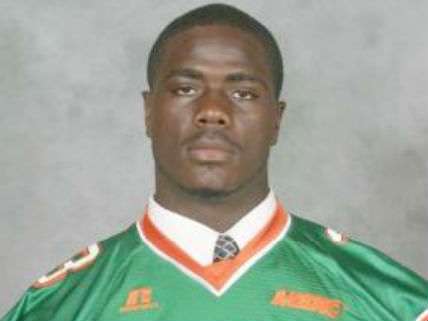Cop's Lawyer Says He Shot Unarmed Motorist 10 Times in Self-Defense
Did Jonathan Ferrell attack Randall Kerrick, or was it the other way around?

The dashcam video of Jonathan Ferrell's deadly 2013 encounter with police in Mecklenburg County, North Carolina, has not been publicly released, lest it taint the outcome of the criminal case against Randall Kerrick, the officer who killed him. But the footage was damning enough that it convinced Charlotte-Mecklenburg Police Chief Rodney Monroe to arrest Kerrick for voluntary manslaughter the day of the shooting, which occurred after Ferrell crashed his car early in the morning and was mistaken for a burglar when he sought help at a nearby house. The outcome of Kerrick's trial, which began yesterday, may depend on how the jury interprets that 15-second video, which Kerrick claims omits or obscures crucial details.
The prosecution and defense agree on this much: After the accident, Ferrell, a 24-year-old who had played football at Florida A&M before moving to Charlotte, escaped the wreck of his fiancée's car by kicking out the rear window. Around 2:30 a.m., he knocked on the door of Sarah McCartney, who was home with her 1-year-old son. Awakened by the knocking, McCartney initially thought it was her husband, who was working late. After opening the door and seeing a stranger, she shut the door and called police to report an intruder. When Kerrick and two other officers arrived 11 minutes later, Ferrell approached them.
During his opening argument, Deputy Attorney General Adren Harris, who was assigned to the case as a special prosecutor, said Ferrell became alarmed when one of the officers drew a Taser and aimed it at him. He ran and ducked between two cars, which was where Kerrick happened to be standing, his gun drawn. Backing up, Kerrick fired four rounds at Ferrell, and both of them fell down. Ferrell began crawling, and Kerrick fired six more rounds. Ferrell was still moving, so Kerrick shot him twice more, for a total of 12 rounds, 10 of which struck Ferrell. The cops handcuffed him, just in case. "Neither officer on the scene, while Jon is lying face down in a pool of blood, attempts to render any first aid," Harris said. "Ladies and gentlemen of the jury, who polices the police when they do wrong? You do."
According to defense attorney Michael J. Greene, Ferrell was belligerent from the beginning. Undeterred by a jolt from the stun gun, he attacked Kerrick and continued the assault even after the first four shots, climbing on top of him and hitting him in the face. Greene said Ferrell's DNA was found on the trigger and slide of Kerrick's gun and under the officer's fingernails, which sounds like evidence of a physical struggle but does not indicate who started it. "This case is about choices," Greene said. "Jonathan Ferrell's bad choices forced Officer Kerrick to make the ultimate choice."
During cross-examination of the first few prosecution witnesses, Greene highlighted Ferrell's drinking and pot smoking. Although Ferrell went to a bar with co-workers from Best Buy the night of the accident and shared part of a joint with one of them, the medical examiner found no evidence of marijuana in his blood and put his alcohol concentration at 0.06 percent, less than the legal cutoff for driving under the influence. A waitress testified that Ferrell had ordered two Coors Lights over the course of the evening and did not seem impaired when he left the bar.
McCartney, the woman who called the police, testified that after she "shut the door really quickly," Ferrell started "kicking and yelling" and "seemed very angry," although he did not try to enter the house. She had accidentally activated her burglar alarm when she opened the door, and he kept asking her to turn it off. She did not hear him ask for help or say anything about an accident. "I was terrified," she said. "I was worried about my child."
Ferrell was black, while McCartney and Kerrick are white, which raises the question of whether his skin color made him seem more threatening to them. "This case is not about race," Greene, who is black, said. "It never was." A lawyer for Ferrell's family, which last May reached a $2.3 million settlement with the city, seems to agree, up to a point. "I think this disproportionately affects the African American community because they disproportionately encounter police officers," Chris Chestnut told The Huffington Post last year, "but I think this is a larger problem affecting all Americans, regardless of race. There is a fundamental problem with the training of police officers."


Show Comments (57)